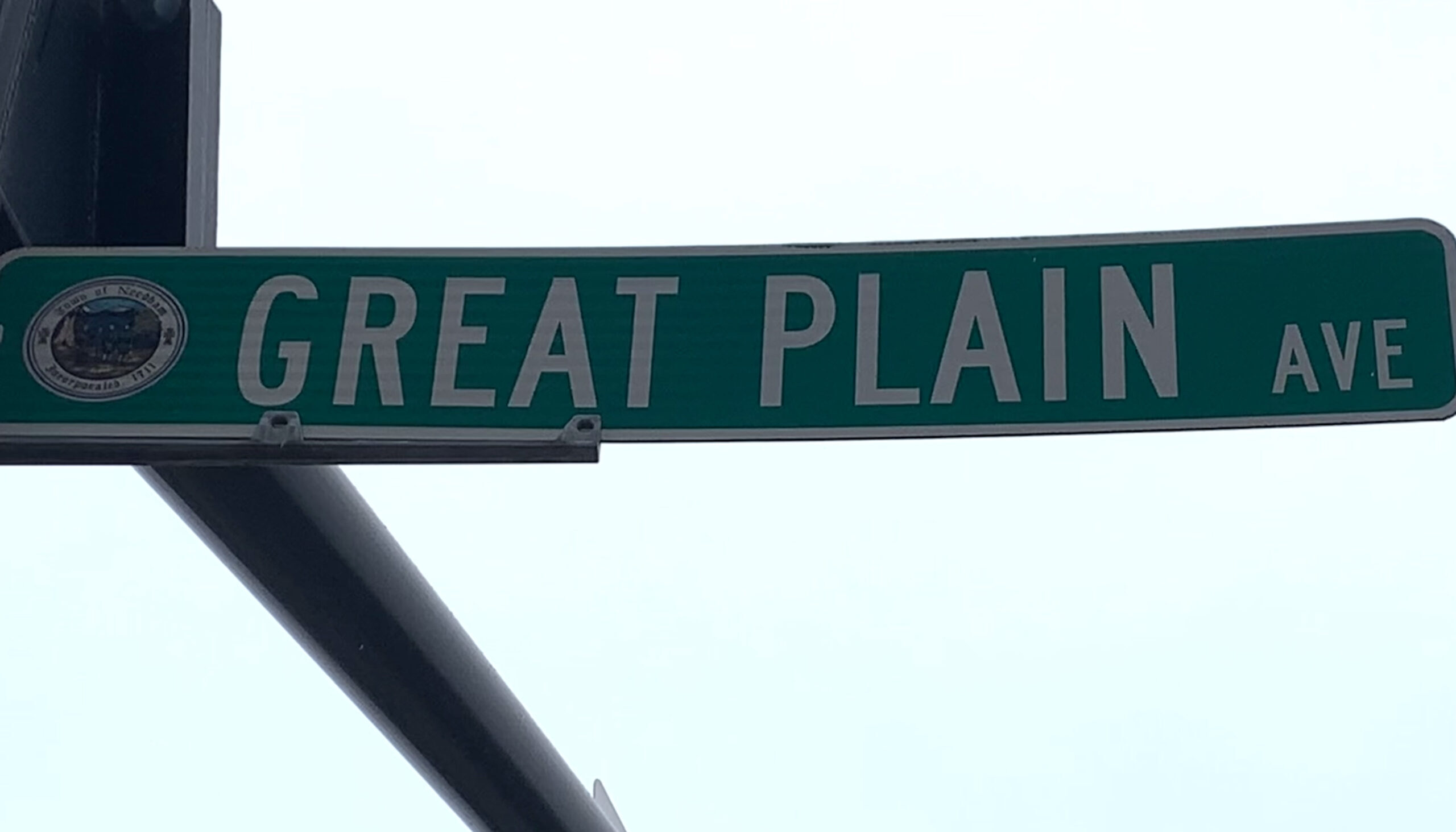
A ‘People-first Design’ for Great Plain Avenue
March 15, 2024
• A fourth and final engineering firm presented its preliminary conceptual plans for the Great Plain Avenue redesign project to the Select Board Tuesday night.
In an effort to increase safety and accommodate downtown foot traffic, firm GPI suggested instituting one-lane travel down both directions of the street. All three of the previous firms — who presented to the board late last month — indicated they too would install a road diet, reducing the two lanes down to a single lane.
“There’s some safety issues with a really wide street, and also it’s just not as comfortable for the pedestrian experience,” GPI Project Manager Carolyn Radisch said. “So we want to welcome all people. We make it a people-first design, prioritize the pedestrians and improve the streetscape.”
One of GPI’s renderings did include left turn lanes from Great Plain Avenue onto Chestnut Street and Chapel Street. Project leads also discussed adding tree root cells that lengthen the trees’ lifespan, as well as wayfinding signs throughout town.
GPI recently completed work on Boston’s Ruggles Street, where Radisch said protected bike lanes and traffic-calming measures have bettered the neighborhood. For that project, the firm held open houses, which would be part of their public engagement in Needham, she added.
In its similar ongoing project in downtown Boston, GPI also hosted a pop-up, where they gathered feedback from passers-by. In Needham, Radisch said they would plan a variety of public engagement events, both in-person and virtual, to get residents’ input.

By creating stronger infrastructure for biking, drivers on Great Plain Avenue could actually experience less traffic, Radisch said. The downtown should support all modalities, she added.
“Bicycles make streets safer for all users. It makes it safer for pedestrians and also vehicles as well,” Radish said. “It keeps everybody in their place, it kind of calms traffic, and so there’s a lot of benefits to putting in protected bicycles. And to the extent that people bike downtown, they’re not using parking and they’re not adding to congestion, so all of those things go together.”
Street parking is a must, and Needham has no shortage of it, said John Diaz, GPI’s principal with a background in traffic. But knowing where to park is a concern, he said.
“You do have such a vast amount of parking in town. The problem is, I live here and I don’t know where to park,” Diaz said. “I just found out the other day I can park at Needham Heights for the train. I didn’t even know there was a parking lot there. There’s no signs.”
To test out the potential impact on traffic, GPI proposed instituting a pilot program, where they essentially reconfigure the street with temporary materials to observe traffic flow.
With buffers creating space between vehicles and pedestrians, Great Plain Avenue could better serve the community, Radisch said, especially as the town eyes future zoning.
“The MBTA Communities housing bill is all about walking and biking to the transit station, so you want to really strengthen those networks, walking and biking,” Radisch said. “We want to support the businesses, the downtown is about the businesses, and also emphasize safety for all users: bikes, pedestrians and also transit riders.”
One of the four presenting firms should be selected sometime this month, according to a timeline in the project’s request for proposals. Construction is anticipated to begin in August 2025.

